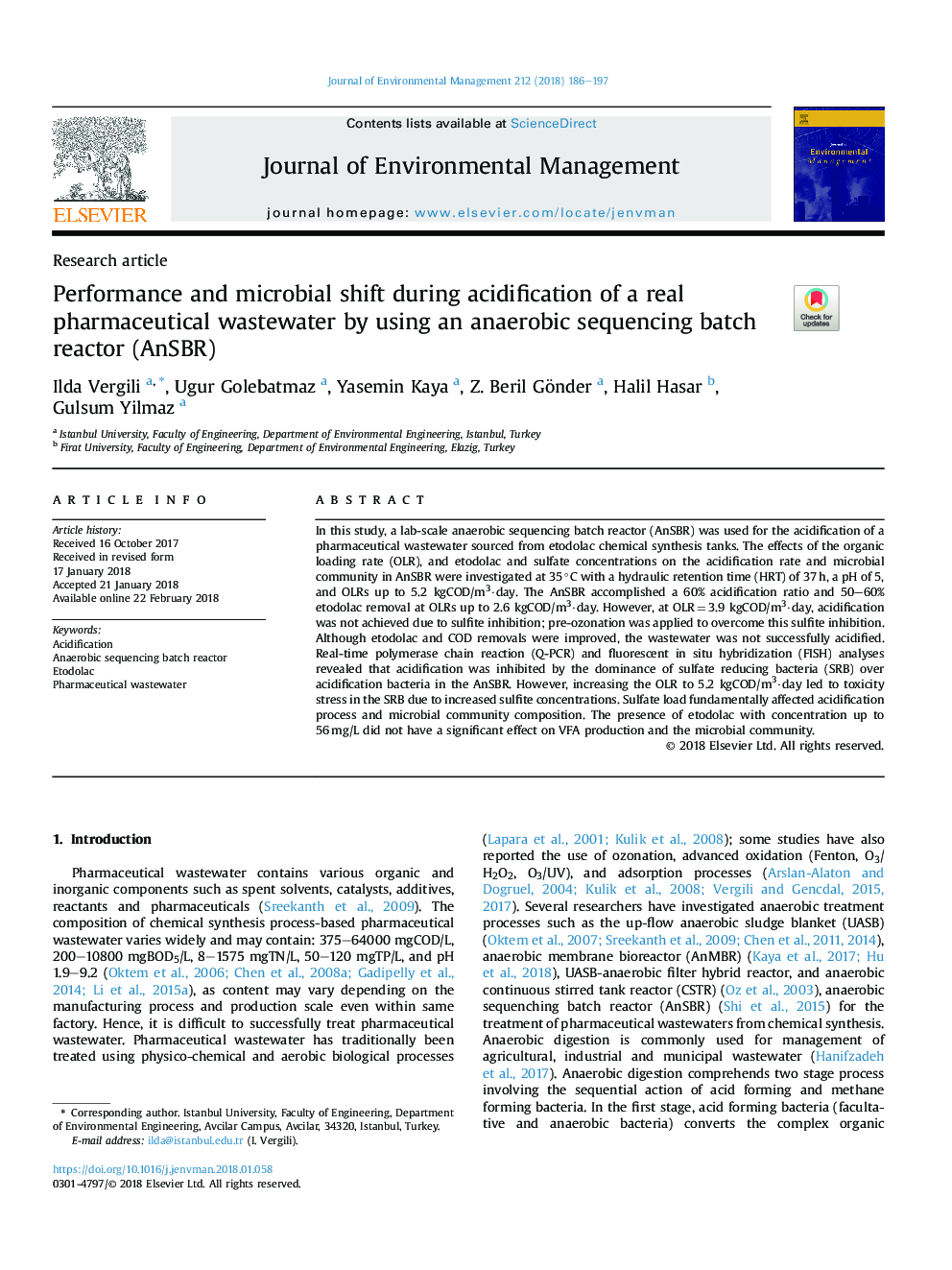| Article ID | Journal | Published Year | Pages | File Type |
|---|---|---|---|---|
| 7477997 | Journal of Environmental Management | 2018 | 12 Pages |
Abstract
In this study, a lab-scale anaerobic sequencing batch reactor (AnSBR) was used for the acidification of a pharmaceutical wastewater sourced from etodolac chemical synthesis tanks. The effects of the organic loading rate (OLR), and etodolac and sulfate concentrations on the acidification rate and microbial community in AnSBR were investigated at 35â¯Â°C with a hydraulic retention time (HRT) of 37â¯h, a pH of 5, and OLRs up to 5.2 kgCOD/m3·day. The AnSBR accomplished a 60% acidification ratio and 50-60% etodolac removal at OLRs up to 2.6 kgCOD/m3·day. However, at OLRâ¯=â¯3.9 kgCOD/m3·day, acidification was not achieved due to sulfite inhibition; pre-ozonation was applied to overcome this sulfite inhibition. Although etodolac and COD removals were improved, the wastewater was not successfully acidified. Real-time polymerase chain reaction (Q-PCR) and fluorescent in situ hybridization (FISH) analyses revealed that acidification was inhibited by the dominance of sulfate reducing bacteria (SRB) over acidification bacteria in the AnSBR. However, increasing the OLR to 5.2 kgCOD/m3·day led to toxicity stress in the SRB due to increased sulfite concentrations. Sulfate load fundamentally affected acidification process and microbial community composition. The presence of etodolac with concentration up to 56â¯mg/L did not have a significant effect on VFA production and the microbial community.
Related Topics
Physical Sciences and Engineering
Energy
Renewable Energy, Sustainability and the Environment
Authors
Ilda Vergili, Ugur Golebatmaz, Yasemin Kaya, Z. Beril Gönder, Halil Hasar, Gulsum Yilmaz,
